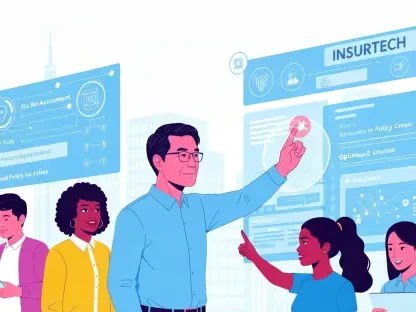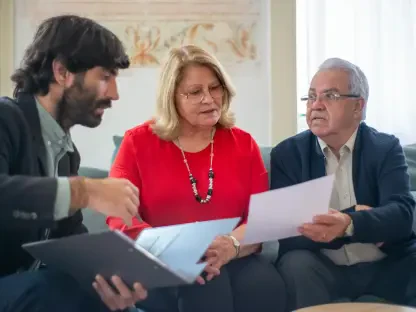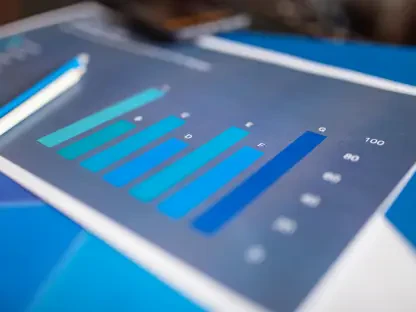I’m thrilled to sit down with Simon Glairy, a distinguished expert in insurance and Insurtech, whose deep expertise in risk management and AI-driven risk assessment has shaped innovative approaches in the industry. With a career dedicated to navigating the evolving landscape of claims and loss adjusting, Simon offers unparalleled insight into the recent reforms by professional bodies like the Chartered Institute of Loss Adjusters (CILA). In this conversation, we explore how governance changes, technological advancements, and emerging challenges like climate risks are redefining the role of loss adjusters, as well as the strategies to attract fresh talent and ensure the profession remains relevant in a rapidly changing world.
Can you walk us through the key motivations behind the recent governance and membership reforms in the loss adjusting profession?
Absolutely. The primary driver behind these reforms is the need to stay relevant in a fast-evolving industry. Loss adjusting isn’t just about assessing claims anymore; it’s about adapting to new risks, technologies, and regulatory expectations. The changes aim to address outdated structures that could limit the profession’s ability to respond to modern challenges. By rethinking governance and broadening membership, we’re ensuring that loss adjusters are equipped to handle everything from digital tools to complex climate-related claims, while also maintaining a high standard of professionalism.
How do you see the shift from a council to a board structure impacting the strategic direction of the profession?
This shift is crucial for bringing fresh perspectives into the fold. A council often consists solely of industry insiders, which can lead to an inward-looking approach. A board, on the other hand, incorporates independent voices who can challenge assumptions and provide strategic oversight. This structure fosters better decision-making and accountability, ensuring that the profession isn’t just reacting to change but proactively shaping its future with a wider lens on societal and industry trends.
What’s the significance behind redefining loss adjusting by its activities rather than the individuals performing them?
It’s a game-changer because it acknowledges the reality of today’s claims environment. Loss adjusting now spans a wide range of activities—investigation, validation, resolution—across the entire claims process, and it’s not limited to a specific job title. By focusing on what the work entails, we’re opening the door to a more diverse set of professionals who contribute to these tasks, whether they’re traditional adjusters or specialists from other fields. This reflects the interdisciplinary nature of modern claims handling and makes the profession more inclusive.
Why is it important to create membership pathways for professionals from related disciplines like engineering or accounting?
Claims work has become incredibly specialized, and professionals like chartered engineers or accountants bring critical expertise to the table, especially in complex cases involving technical assessments or financial loss. Including them under the loss adjusting umbrella not only elevates the quality of service but also enriches the profession with diverse skills. It’s about building a community that collectively raises the bar, ensuring clients get the best possible outcomes no matter the nature of the claim.
How is technology, particularly AI, reshaping the day-to-day work of loss adjusters?
Technology, especially AI, is transforming how we approach claims at every level. AI can analyze vast amounts of data from multiple sources—think satellite imagery or historical claims records—to provide insights faster than any human could. It’s already streamlining tasks like initial damage assessments with drones or digital platforms. This frees up adjusters to focus on higher-value aspects of their role, like engaging with clients and making nuanced judgments. It’s not about replacing people; it’s about amplifying their impact.
Where do you see the balance between technological capabilities and the human elements of loss adjusting, such as empathy?
That’s the million-dollar question. Tech can handle data crunching and repetitive tasks, but empathy, understanding a client’s emotional state, and exercising seasoned judgment—these are irreplaceable human traits. For instance, when someone’s home is flooded, no algorithm can fully grasp the distress they’re feeling or tailor a response with the same care a person can. The balance lies in using tech to manage the process efficiently while preserving human interaction for the moments that matter most.
With climate risks like flooding becoming more frequent, how is the profession preparing to handle these surge events?
Climate risks are a top priority. We’re focusing on rapid response capabilities because timing is everything during events like flooding. Technology plays a huge role here—digital tools and AI can help triage claims and allocate resources quickly. Beyond that, we’re emphasizing training to ensure adjusters are well-versed in the unique challenges of climate-related claims, from assessing environmental damage to navigating regulatory nuances. It’s about being proactive rather than just reactive.
Attracting new talent seems to be a significant focus. How can the industry better showcase the appeal of loss adjusting to the next generation?
We need to bust the myth that loss adjusting is a desk-bound, mundane job. It’s dynamic—think visiting disaster sites, leveraging cutting-edge tech, and directly helping people in crisis. The industry must tell this story better through outreach, mentorship programs, and partnerships with schools or universities. Highlighting the diversity of roles and the real-world impact of the work can make it an exciting career choice for young professionals looking for purpose and variety.
What is your forecast for the future of loss adjusting in light of these ongoing reforms and challenges?
I’m optimistic. With these reforms, loss adjusting is poised to become a more agile, inclusive, and tech-savvy profession. We’ll see greater collaboration across disciplines, smarter use of digital tools, and a stronger focus on public benefit—whether that’s through faster claims resolution or fairer outcomes for customers. The challenge will be keeping pace with change, from climate volatility to regulatory shifts, but with a modernized structure and a commitment to professionalism, I believe loss adjusting will not just survive but thrive in the years ahead.









